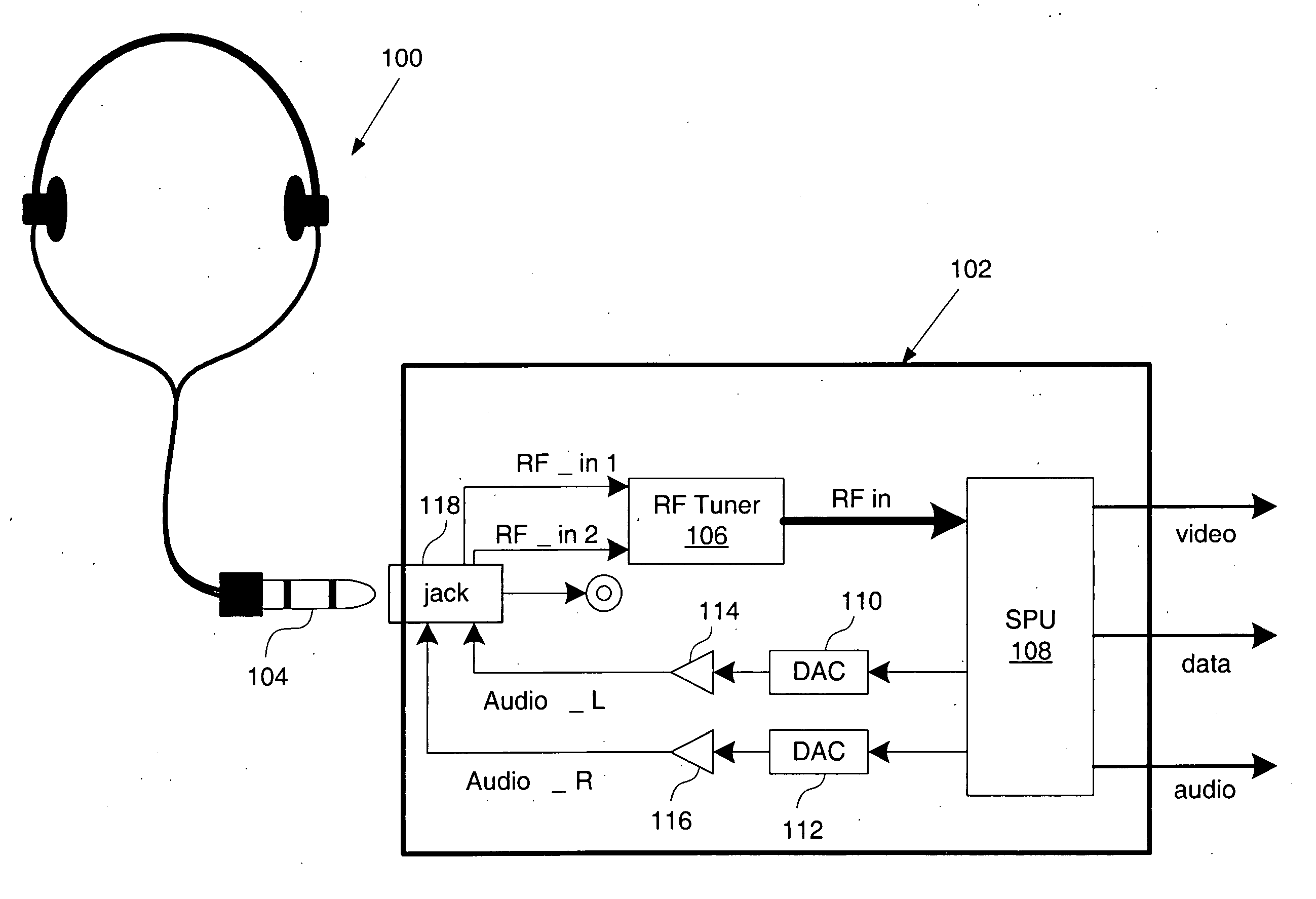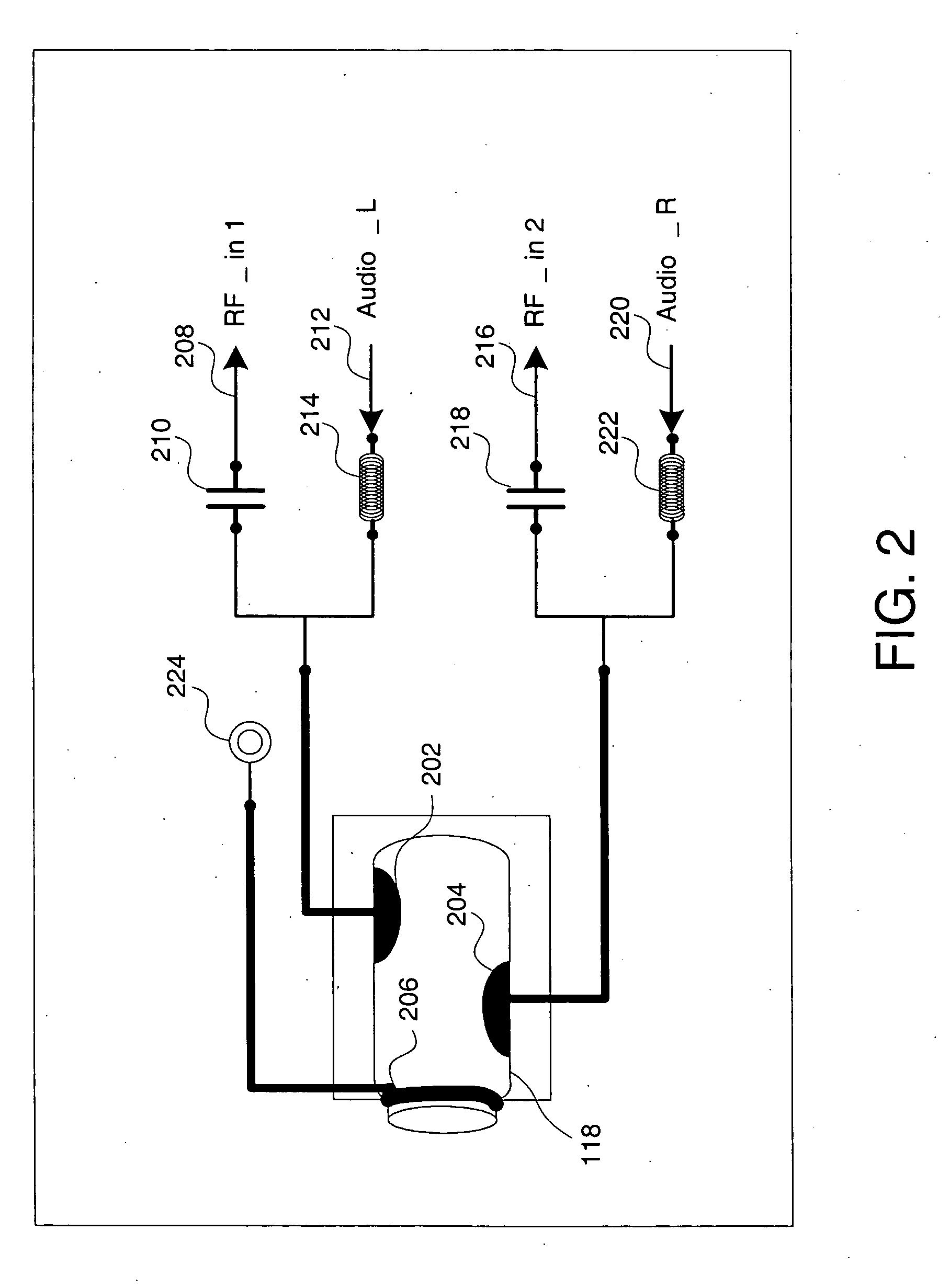Mobile device multi-antenna system
a multi-antenna and mobile device technology, applied in the field of antennas, can solve problems such as data errors, constrictive and destructive interference, and interference caused by diffraction, and achieve the effects of improving radio reception, reducing the correlation of em signals received, and improving the reception of radio receiver devices
- Summary
- Abstract
- Description
- Claims
- Application Information
AI Technical Summary
Benefits of technology
Problems solved by technology
Method used
Image
Examples
Embodiment Construction
[0026] Embodiments of the present invention provide headsets having a plurality of antenna elements. In order to take advantage of spatial or polarization diversity, exemplary embodiments of the present invention coupled the antenna elements in such a manner as to result in low-correlation between the antenna elements. In one embodiment, two uncorrelated or low-correlated antenna elements are provided, although any number of antenna elements may be utilized in alternative embodiments. Referring to FIG. 1, an exemplary headset apparatus 100 and receiving device 102 are shown. The exemplary headset apparatus 100 may be a stereophonic headphone. The headset apparatus 100 may be coupled to, and interfaced with, the receiving device 102 via a plug or connector 104. The headset apparatus 100 will be discussed in more detail in connection with FIG. 3 below.
[0027] In exemplary embodiments, the receiving device 102 is a mobile, radio-receiving device which comprises a radio frequency (RF) t...
PUM
 Login to View More
Login to View More Abstract
Description
Claims
Application Information
 Login to View More
Login to View More - R&D
- Intellectual Property
- Life Sciences
- Materials
- Tech Scout
- Unparalleled Data Quality
- Higher Quality Content
- 60% Fewer Hallucinations
Browse by: Latest US Patents, China's latest patents, Technical Efficacy Thesaurus, Application Domain, Technology Topic, Popular Technical Reports.
© 2025 PatSnap. All rights reserved.Legal|Privacy policy|Modern Slavery Act Transparency Statement|Sitemap|About US| Contact US: help@patsnap.com



